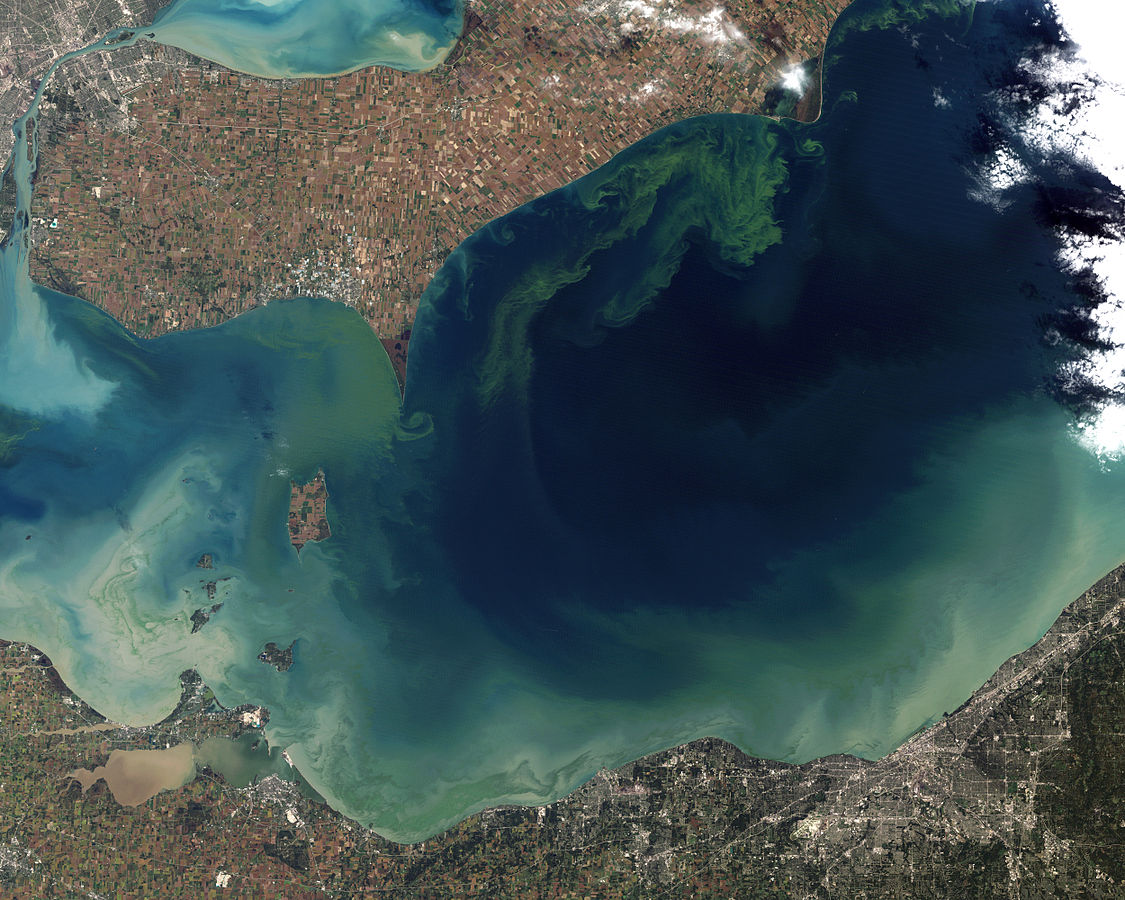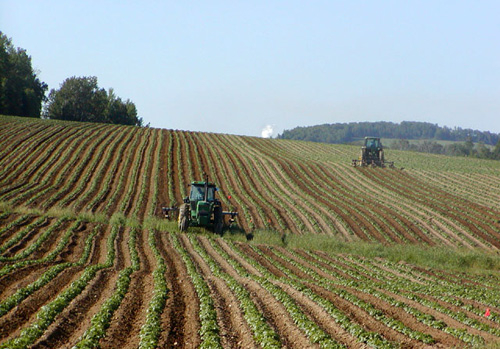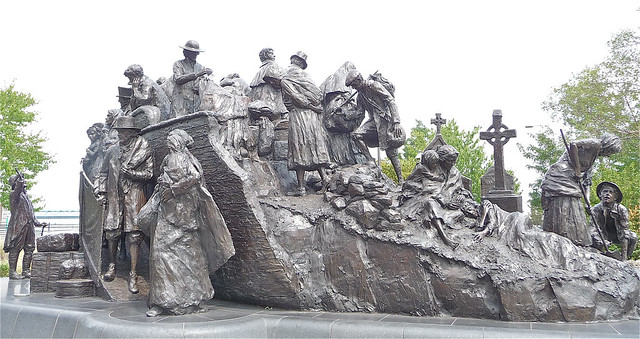In Module 5, we learned about the importance of early agriculture to world development. In short, early agriculture permitted more humans to live, to live with better health, and to engage in activities other than basic survival. These other activities have brought us no less than civilization itself. While there can be some civilization without agriculture, there couldn’t be nearly as much as we have today.
Now, we’re going to learn about modern industrial agricultural, whose impacts have been every bit as consequential for humanity. Industrial agriculture has substantially increased global agricultural productivity, leading to much more food for a growing human population. Industrial agriculture has also impacted human society in a variety of other ways and has had major impacts on the environment, many of which are harmful. Industrial agriculture is thus an important but complex topic worth considering in some detail.
The Haber-Bosch Process For Nitrogen Fertilizer
Let’s begin by examining one of the core industrial processes used in modern agriculture: the Haber-Bosch process for synthesizing ammonia (NH3). Ammonia is used as fertilizer to put nitrogen into soils for plants. Soil nitrogen is needed by most of our major staple crops, in particular, wheat and corn. The Haber-Bosch process, developed in the early 1900s, is thus crucial to all industrial agriculture, whether in wealthy countries or poor ones.
Reading Assignment: Detonator Of The Population Explosion
Please read the article Detonator of the Population Explosion(link is external) by Vaclav Smil(link is external). Smil is an interdisciplinary researcher at the University of Manitoba. He received his Ph.D. from the Penn State Department of Geography.
As you read the article, think about the significance of the Haber-Bosch process to global human civilization. Where would we be without it?
The Haber-Bosch process affects more than just food supplies. It also affects the environment. Indeed, humanity grows so much wheat, corn, and other nitrogen-needing crops that our use of nitrogen fertilizer is significantly altering the planet’s nitrogen cycle. This has major environmental consequences. Here are two:
Energy Consumption
The chemistry of the Haber-Bosch process requires high pressure and temperature, which in turn requires a lot of energy. Given this and the large scale of global nitrogen fertilizer production, the process uses about 1% of total world energy consumption. Most of this energy is from fossil fuels. Fossil fuel supplies are limited, and any system dependent on them is unsustainable. If humanity’s agriculture remains dependent on the Haber-Bosch process and on fossil fuels, then, eventually, we may struggle to feed ourselves.
Algal Blooms
An algal bloom is a high concentration of algae found in both inland and oceanic waters worldwide. How are algae blooms connected to nitrogen fertilizer? First, the nitrogen has to get from the farm to the water. When the fertilizer is applied, a lot of the nitrogen is not taken up by the plants. The rest of the fertilizer washes off. Eventually, this fertilizer finds its way into ponds and lakes, or into rivers which carry it into oceans and seas. The nitrogen then accumulates in these waters. Second, nitrogen then causes algae growth. This happens because nitrogen is often a limiting factor in algae growth. In other words, algae often face a nitrogen shortage such that if only they had more nitrogen, then all the other necessary factors for algae growth would be available, and more algae would grow. When this is the case, and when new nitrogen is introduced from the runoff from farms, then more algae will grow. We see this happening quite often worldwide. The following image of algae in Lake Erie is but one example.

Other Industrial Processes
The Haber-Bosch process is just one of several industrial processes used in industrial agriculture. Other important processes include pesticide production, heavy farming machinery such as tractors, and irrigated water distribution systems. Without these processes, our agriculture could not yield as much food as it does. However, just as with the Haber-Bosch process, these other processes have downsides.
One important downside is the sustainability of agriculture water inputs. A lot of industrial agriculture draws in fossil water resources, which is water that has accumulated gradually over a long time, just as fossil fuels are fuels that have accumulated gradually over a lot of time. Fossil water is often in underground aquifers such as the Ogallala Aquifer beneath the United States Great Plains. The Ogallala has helped the Great Plains produce a lot of food, but the water is depleting, forcing farmers to farm differently.
Reading Assignment: USGS Fact Sheet
The United States Geological Survey (USGS) is a scientific agency within the Department of the Interior. The USGS is very active on many aspects of human-environment systems including natural resources and natural hazards. The USGS employs many people with backgrounds in geography and related fields.
Like other government agencies, the USGS produces a lot of fact sheets. A fact sheet is a short (usually one or two page) document that gives a concise presentation of key facts on a specific topic. Fact sheets are used to brief government officials on these topics so that they have the background they need to make decisions. If you work in government (or in certain other sectors), then you’ll likely be reading and writing fact sheets.
Please read the USGS fact sheet Changes in Water Levels and Storage in the High Plains Aquifer, Predevelopment to 2011 and 2009–11.(link is external)
As you read the fact sheet, think about two things. First, what changes have occurred in the High Plains (Ogallala) Aquifer, and how does this affect the sustainability of agriculture? Second, how is a fact sheet formatted, and how does this format support its use for briefing government officials? Think about every part of the document, including the main text, the graphics, the references, etc.
Finally, industrialized agriculture also involved changes in both which plants were grown and how they were grown. New varieties of staple crops like wheat, maize (corn), and rice were developed to respond well to fertilizers and other industrial inputs. New varieties played a particularly strong role in the spread of industrialized agriculture to lower-income regions of the world in what is known as the Green Revolution. Indeed, Norman Borlaug(link is external), the man often considered to be the “father of the Green Revolution,” was a researcher who developed new varieties of wheat and other crops.
The Green Revolution
Thus far, we’ve been focused on the biological and ecological sides of industrialized agriculture. Now let’s look at the social side by considering one major portion of it: the Green Revolution. The Green Revolution took place mainly in the 20th Century, but to some extent continues to this day.
The essence of the Green Revolution has been to bring high-yield industrial agriculture to the Third World in the 1940s through the 1970s. Now, recall that in Module 5 we said that “Third World” is often an outdated and inappropriate term because it refers to countries outside the capitalist and communist blocs of the Cold War. Here, however, Third World is the appropriate term to use because the Green Revolution was part of the Cold War. Indeed, the term Green Revolution was coined in contrast to the term Red Revolution, the latter of which refers to revolution towards communism. Capitalist countries, led by the United States, used the Green Revolution as a means of making Third World countries more supportive of capitalism and less supportive of communism. (As we’ll see later in the module, the Soviet Union made similar efforts.) To be sure, there was also a genuine desire to help the Third World feed themselves. But we should recognize that the Green Revolution had selfish motivations and political motivations as well as altruistic motivations. This combination of selfishness and altruism is found repeatedly throughout global development efforts. It follows from a holistic, systems perspective of development that considers all the consequences of development efforts.
The Green Revolution resulted in the adoption of new agricultural practices and technologies in a variety of places around the globe. The most important of those new processes and technologies were newly developed high-yield crop varieties, chemical fertilizers, and mechanization.
The Green Revolution was highly successful in many regards. Yields in countries like India and Mexico increased dramatically, significantly reducing food security issues in these countries. Furthermore, many of the countries ended up not joining the Communist bloc, which was another core goal of the Green Revolution. But there were also downsides, as would be expected from a program this complex. The overall merits of the Green Revolution remain fiercely debated to this day.
Of all the regions in the world, the one that currently has the least industrialized agriculture system is Africa. For a variety of natural and social reasons, the Green Revolution did not take hold in Africa at strong as it did elsewhere. For this reason, and because much of Africa continues to struggle with food security, there are ongoing efforts to bring industrialized agriculture to Africa.
Consider This: Alliance for a Green Revolution in Africa
Please read the about the Alliance for a Green Revolution in Africa (AGRA)(link is external).
Please just briefly skim this page, and do not follow any of the links unless they are of additional interest to you. As you read this web page, think about what AGRA’s approach to development is. Is AGRA using a systems perspective? What is it doing well, and what could it be doing better?
Monoculture
One concern often voiced about industrial agriculture, whether it’s the Green Revolution or otherwise, is that industrial agriculture generally involves monoculture. Monoculture is agriculture in which only one type of crop is grown. It thus has very low biological diversity. Monoculture is well-suited to industrial agriculture because it’s much easier to use heavy farm machinery when the machinery can be customized for one crop. The monoculture-machinery system can be seen in this image of an industrial agriculture landscape:

But monoculture also has disadvantages. For example, when one crop is grown repeatedly in an area, it will deplete one set of nutrients from the soil. It was mentioned above that grain crops like maize and wheat deplete nitrogen from the soil, and that this depletion drives the usage of industrial nitrogen fertilizer as produced by the Haber-Bosch process. But some plants, such as legumes, fix nitrogen from the air and put it into the soil. Legumes include beans, peas, soy, and peanuts. When these plants are grown around grain plants, less nitrogen fertilizer is needed. This is beneficial because fertilizer can be expensive and can harm ecosystems. However, when different types of plants are grown together, it is more difficult to use heavy machinery.
Another disadvantage of monoculture is its yield stability. Yield stability refers to how stable the yield of an agricultural system is over time from one year to another. An agricultural system with high yield stability will output about the same amount of food each year. An agricultural system with low yield stability will likely output very different amounts of food each year. In brief, the adoption of monoculture farming can cause an agriculture system to be less tolerant of disturbances or perturbations (e.g., pest outbreaks) and less sustainable with higher instability in crop production.
Biologically diverse agricultural systems tend to have more yield stability than does monoculture. This is because when some event happens that could reduce yields, the event typically only affects some of the species within the system. For example, if rainfall is unusually low one year, but some of the crops planted are well-suited to low rainfall, then those plants will have high yields. If rainfall is high the next year, then those plants will have low yields, but other plants will have high yields, making up for it. So, no matter how much rain falls each year, there will be some crops with high yields, and thus a fairly stable total yield. In contrast, if the system has less diversity, and all of the crops are well-suited for one specific amount of rainfall, then the yield will be either very high (if that specific amount of rain falls) or very low (if some other amount of rain falls). Thus, less diverse systems have less stability.
A striking historical example of the importance of biodiversity to yield stability is the Irish potato famine. In this example, low biodiversity led to a catastrophically low yield.
Consider This: The Irish Potato Famine
In the mid-1800s, many people in Ireland were trying to support themselves and their families on very small pieces of land – often just a few acres. For them, the only crop that could provide enough calories was the potato. And so, they planted lots of potatoes, and not much else. This was a very difficult livelihood, but it was largely feasible.
Then, in 1845, potato blight made its way to Ireland from the United States. The blight was devastating to the potato crop, destroying as much as a third or a half of it. The consequences for the Irish people were catastrophic. The people hit the hardest were those whose agriculture was focused mainly on growing potatoes – the people whose agriculture had very little biodiversity. To make matters worse, these people already faced very difficult living conditions. With the devastation of their potato crops, they had little else available.
The potato blight caused a great famine, affecting a large portion of the Irish people. By the end of it, the island’s population fell from 8 million to around 6 million. About one million people died, and another million people emigrated to other places. Cities on the east coast of the United States, such as Boston, New York, Philadelphia, and Baltimore, all gained large Irish populations which they retain to this day.

It is important to understand that the causes and consequences of the famine were both ecological and social. The famine would not have occurred if the blight did not affect potatoes so severely, or if Irish agriculture had more biodiversity. The lack of biodiversity there was largely due to the social factors which caused the people to have such small plots of land to farm. Meanwhile, the blight was introduced to Ireland through a social process: shipping across the Atlantic Ocean. Originally, the potato itself was introduced via trans-Atlantic shipping as well: the potato is native to South America. Finally, the consequences of the famine would have been different if there was different support for the people affected by the blight. There was some support, which saved lives; this support could have been greater or lesser. Thus, the case of the Irish potato famine illustrates both the importance of biodiversity to yield stability and the idea that agriculture is a coupled human-environment system.

